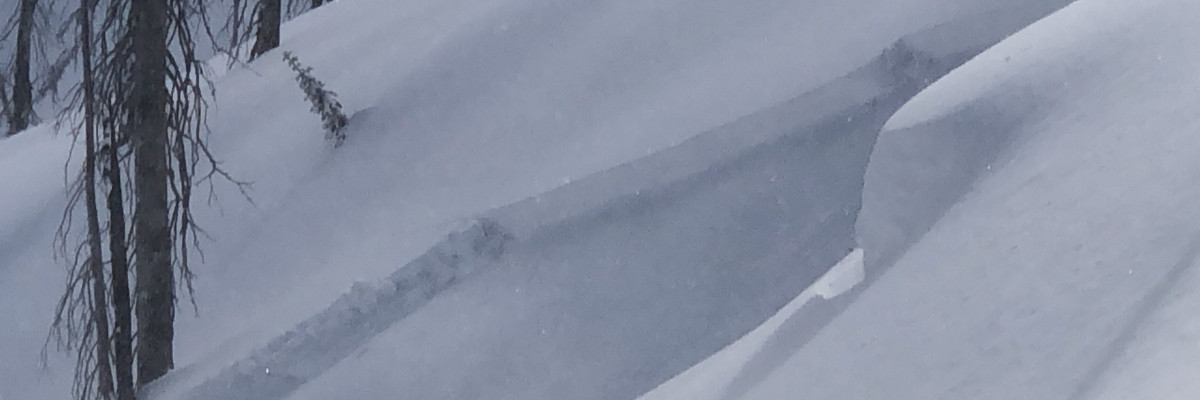The avalanche danger in the west-central Montana backcountry is Considerable. New snow, wind and buried facets have created dangerous avalanche conditions. Careful snowpack evaluation, cautious route finding, and conservative decision making are essential.
Good Morning. This is Jeff Carty with the West Central Montana Avalanche Center advisory on Tuesday, March 30, 2021. This advisory does not apply to operating ski areas and expires at midnight tonight. The USDA Forest Service is solely responsible for its content.
Weather and Snowpack
Winter has returned. In the last 48 hrs the mountains have received between 0.3″ SWE at Stuart Mt. and 2.2″ SWE at Twin Lakes in the central Bitterroot. Much of the forecast area has 12″+ of new snow. Temperatures this morning are 17º at 7400′. Winds have been strong out of the west. Scattered snow showers are possible today with minimal accumulation, westerly winds will be moderate with strong gusts. Temperatures will remain below freezing above 6000′.
There are currently three problems contributing to touchy avalanche conditions:
Up to 24” of new snow in the past 48 hrs has created storm slab conditions. This has not yet bonded to underlying snow surfaces and shooting cracks were common yesterday indicating unstable snow. Storm slab avalanches are likely on convexities and slopes greater than 33º.
Strong to extreme wind has loaded leeward slopes and created very deep drifts. These were very touchy yesterday and have the potential to create large avalanches. Wind slab was remotely triggered yesterday from ridge top in the Bitterroot, and easily triggered by skis in the Rattlesnake. Crown depths were 12″ to 24″, the potential for much deeper avalanches exists. Winds continued overnight adding to the depth and size of wind slabs. Windloaded slopes greater than 30º should be avoided.
Facets that formed around crusts in the upper part of the snowpack during the past two weeks have been overloaded and are propagating easily in tests. Storm slab and wind slab may run on these layers or step down to them, with depths to 36”. These are not layers to mess with. It’s best to give these time to round out and enjoy low angle powder, less than 30º.
Cornices have been reloaded by the storm and are a hazard. Stay out from underneath and well away from the top as they can break farther back than expected.
The storm snow will need some time to settle out and bond. Conservative decisions and mellow terrain are a good idea for today. Warming temperatures tomorrow may help the snowpack bond but will also lead to a new set of wet snow problems as temperatures rise above freezing and the sun comes out.
The Bottom Line
Dangerous avalanche conditions exist and multiple problems complicate management. Human triggered avalanches are likely. Travel in terrain less than 30º is recommended. Avoid traveling under avalanche slopes. Stay alert for red flags such as whumphing and shooting cracks. Carry a beacon, shovel, and probe.
Upcoming Education Events
Please visit our education page for an up-to-date list of regional events and course offerings. Below are new educational opportunities to check out this week.
- April 1, 6-8 PM MST | Mountain Mind | FREE Virtual Event | Get more details and register HERE
Public Observations
Thank you to everyone who has taken the time to send in a public observation. Please keep sharing what you find and see while out in the backcountry. You can now text us your observations to (406) 219-5566 when you don’t have time to fill out the observations page.
Ski and ride safe.














